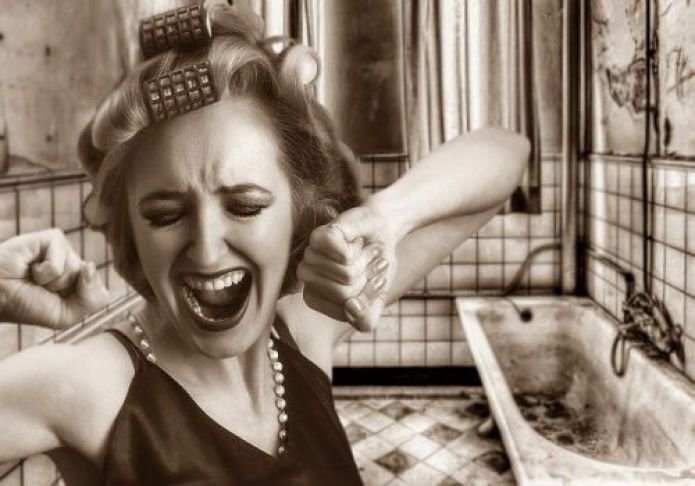|
|
 |
France - country information |
 |
Veliky Novgorod - Russia |
 |
Riga - Latvia |
 |
Helsinki - Finland |
 |
Nha Trang: the weather has normalized, but the infrastructure has not been restored yet |
 LATEST REVIEWS
LATEST REVIEWS
 |
Choosing a portable toilet |
 |
Plumbing faucets, the best of the best |
 |
Green crops |
 |
Dishwasher – freestanding, built-in or compact? |
 |
How to choose a dishwasher - what you need to know |
Mold in the bathroom
Keeping your bathroom dry can prevent mold growth. Knowing where mold spreads the most can help you fight and prevent mold ...

The danger is not the mold itself, but the millions of spores it releases into the surrounding space. Spores are very volatile; together with the air, they enter our lungs.
Once in the respiratory and circulatory system, spores can provoke a number of diseases.
What's more, mold produces organic compounds that can lead to unpleasant odors.
Mold can cause allergic skin diseases that are difficult to diagnose and difficult to treat, such as dermatoses, as well as negatively affect the respiratory tract (cough, runny nose, etc.)
Shower
Almost any object that is exposed to large amounts of water and moisture is at risk of developing mold.
Mold stains can also be found in the shower. Mold grows in the seams of the tiles, and mold can also grow inside the shower stall.
How to deal with mold in the shower
To remove mold from the walls of the shower stall, you can use chlorine-containing products, for this they should be applied to the places affected by mold, give time to influence, then rinse if you need to repeat the cycle several times. Apply chlorine-containing substances with caution to all kinds of coatings, some coatings can deteriorate under too long exposure to chlorine.
Floor
The bathroom floor is constantly exposed to water and moisture. Surely, while standing on the bathroom floor, when you dry yourself after a shower, you are laying a wet towel on the floor.
Moisture that accumulates on the floor can cause mold, which will grow in the joints between the tiles. Overly porous and untreated grout retains water and helps mold to grow.
How to deal with mold on the floor
Your floor needs to be properly protected and kept as dry as possible. Keep the ventilation on in the bathroom, and do not leave your towels on the floor, often dry the rug that lies when you exit the shower, as a wet rug can cause not only injury, but also the formation of mold under it. Treat the joints in the tiles with a special liquid that can resist water absorption and mold.
Restroom
One of the most favorite places in the toilet is the seam at the junction of the toilet bowl with the floor. The joint must be completely sealed with a sealant, the sealant must have antiseptic additives. If you take your toilet by both edges and at the same time it can be rocked from side to side, this means that mold can grow under it, the toilet needs to be securely fixed to the floor, and the seam between the floor and the toilet should be sealed with sealant.
Walls and ceiling
Walls and ceilings can also be a breeding ground for mold. Dots in the form of small black snowflakes on the walls and ceiling indicate that you have mold. Mold can grow under the tiles, to avoid this, you need to carefully seal the joints between the tiles.
To remove mold from walls and ceilings, use special products, chlorine-containing products, such as "whiteness", will also be good.
When working on removing mold, use gloves and a respirator, the room should be well ventilated, as chlorine fumes can poison the body.
Rules and methods of struggle to prevent the appearance of mold in the room
To prevent mold from appearing in the room, it is necessary to create conditions that are impossible for the life and reproduction of mold.
- If the room is always dominated by high humidity - provide a constant flow of air into the room through the ventilation openings. Do not keep the bathroom door closed after use or install ventilation grilles at the bottom of the door.
- Seams of tiles with increased porosity can be treated with special impregnations to exclude the formation of mold. If mold has already appeared in the seams, you can treat these places with a chlorine-containing solution, after a while the seams should lighten.
- In humid rooms it is necessary to install forced exhaust ventilation.
- Timely dry rugs and wet towels hanging on the wall.
- Use only sealants with special antifungal additives for sealing joints.


|
 |
| © tour-planet.com 2017 - 2025 |
Copying of texts, photos and other information for re-publication on other resources is allowed only with the written permission of the site administration. |
